
Sri Lanka, historically known as Ceylon and officially the Democratic Socialist Republic of Sri Lanka, is an island country in South Asia. It lies in the Indian Ocean, southwest of the Bay of Bengal, separated from the Indian peninsula by the Gulf of Mannar and the Palk Strait. Sri Lanka shares a maritime border with the Maldives in the south-west and India in the north-west.

Zheng He was a Chinese mariner, explorer, diplomat, fleet admiral, and court eunuch during China's early Ming dynasty, and often regarded as the greatest admiral in Chinese history. He was originally born as Ma He in a Muslim family and later adopted the surname Zheng conferred by the Yongle Emperor. Commissioned by the Yongle Emperor and later the Xuande Emperor, Zheng commanded seven expeditionary treasure voyages to Southeast Asia, South Asia, West Asia, and East Africa from 1405 to 1433. According to legend, his larger ships carried hundreds of sailors on four decks and were almost twice as long as any wooden ship ever recorded.
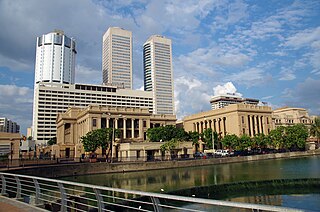
Colombo is the executive and judicial capital and largest city of Sri Lanka by population. According to the Brookings Institution, the Colombo metropolitan area has a population of 5.6 million, and 752,993 in the Municipality. It is the financial centre of the island and a tourist destination. It is located on the west coast of the island and adjacent to the Greater Colombo area which includes Sri Jayawardenepura Kotte, the legislative capital of Sri Lanka, and Dehiwala-Mount Lavinia. Colombo is often referred to as the capital since Sri Jayawardenepura Kotte is itself within the urban/suburban area of Colombo. It is also the administrative capital of the Western Province and the district capital of Colombo District. Colombo is a busy and vibrant city with a mixture of modern life, colonial buildings and monuments.
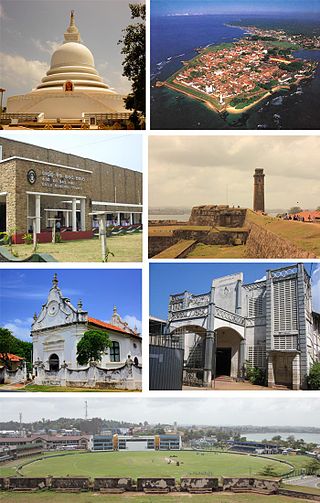
Galle is a major city in Sri Lanka, situated on the southwestern tip, 119 km (74 mi) from Colombo. Galle is the provincial capital and largest city of Southern Province, Sri Lanka and is the capital of Galle District.
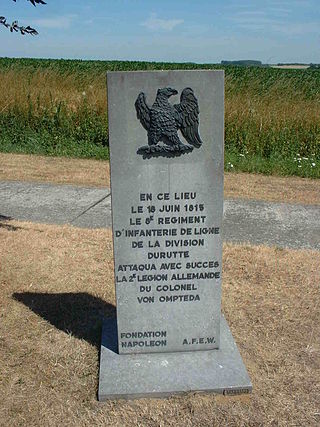
A stele, or occasionally stela when derived from Latin, is a stone or wooden slab, generally taller than it is wide, erected in the ancient world as a monument. The surface of the stele often has text, ornamentation, or both. These may be inscribed, carved in relief, or painted.
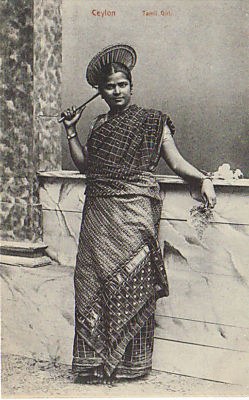
Sri Lankan Tamils, also known as Ceylon Tamils or Eelam Tamils, are Tamils native to the South Asian island state of Sri Lanka. Today, they constitute a majority in the Northern Province, form the plurality in the Eastern Province and are in the minority throughout the rest of the country. 70% of Sri Lankan Tamils in Sri Lanka live in the Northern and Eastern provinces.

Tenavaram temple is a historic Hindu temple complex situated in the port town Tenavaram, Tevanthurai, Matara) near Galle, Southern Province, Sri Lanka. Its primary deity was a Hindu god Tenavarai Nayanar (Upulvan) and at its zenith was one of the most celebrated Hindu temple complexes of the island, containing eight major kovil shrines to a thousand deity statues of stone and bronze and two major shrines to Vishnu and Shiva. Administration and maintenance was conducted by residing Hindu Tamil merchants during Tenavaram's time as a popular pilgrimage destination and famed emporium employing over five hundred devadasis.

In epigraphy, a multilingual inscription is an inscription that includes the same text in two or more languages. A bilingual is an inscription that includes the same text in two languages. Multilingual inscriptions are important for the decipherment of ancient writing systems, and for the study of ancient languages with small or repetitive corpora.
Alagakkonara, also known as Alakeshwara, were a prominent feudal family that provided powerful ministers and military rulers during the medieval period in Sri Lanka. Some historians claim that the family was of Tamil origin, possibly from Madurai or Kanchipuram in Tamil Nadu, India. The family arrived in Sri Lanka around the 13th century and naturalized themselves in Sri Lanka.

The Church of Ceylon is the Anglican Church in Sri Lanka. It is an extraprovincial jurisdiction of the Archbishop of Canterbury, who serves as its Metropolitan. It was established in 1845 with the appointment of the first Anglican Bishop of Colombo, James Chapman and until 1950 it consisted of a single diocese; in that year a second diocese was established at Kurunegala.
Parâkramabâhu VI was the first king of Kotte, ruling from 1410 until his death in 1467. He is the last great king in Sri Lanka who managed to unite the island under one flag. His rule is famous for the renaissance in Sinhalese literature, due to the patronage of the king himself. Classical literature as well as many rock inscriptions and royal grant letters have been found, rendering much information pertaining to this period.
Galle is a town in southwestern Sri Lanka.
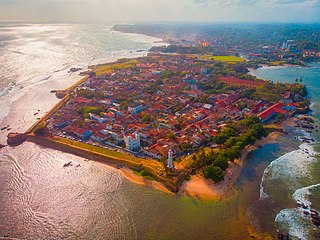
Galle Fort, in the Bay of Galle on the southwest coast of Sri Lanka, was built first in 1588 by the Portuguese, then extensively fortified by the Dutch during the 17th century from 1649 onwards. It is a historical, archaeological and architectural heritage monument, which even after more than 432 years maintains a polished appearance, due to extensive reconstruction work done by Archaeological Department of Sri Lanka.

China–Sri Lanka relations are the bilateral relations between the People's Republic of China and Democratic Socialist Republic of Sri Lanka. There is a Chinese embassy located in Colombo and a Sri Lankan embassy situated in Beijing. Historical and cultural ties between the two countries extend back hundreds of years.
The Methodist Church of Sri Lanka is a Protestant Christian denomination in Sri Lanka. Its headquarters is in Colombo and was established on 29 June 1814. It is a member of the World Council of Churches, the Christian Conference of Asia, the National Christian Council of Sri Lanka and the World Methodist Council.

The Ming treasure voyages were the seven maritime expeditions undertaken by Ming China's treasure fleet between 1405 and 1433. The Yongle Emperor ordered the construction of the treasure fleet in 1403. The grand project resulted in far-reaching ocean voyages to the coastal territories and islands in and around the South China Sea, the Indian Ocean, and beyond. Admiral Zheng He was commissioned to command the treasure fleet for the expeditions. Six of the voyages occurred during the Yongle reign, while the seventh voyage occurred during the Xuande reign. The first three voyages reached up to Calicut on India's Malabar Coast, while the fourth voyage went as far as Hormuz in the Persian Gulf. In the last three voyages, the fleet traveled up to the Arabian Peninsula and East Africa.
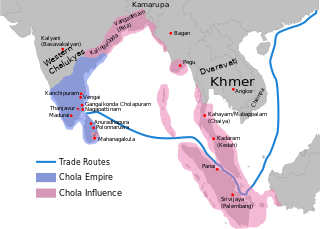
Tamils maintained a good relationship with the Chinese, with evidence of trade relations going back to 2nd century BC.

Wolvendaal Church is located in Pettah, a neighbourhood of Colombo. It is one of the most important Dutch Colonial era buildings in Sri Lanka, and is one of the oldest Protestant churches still in use in the country.
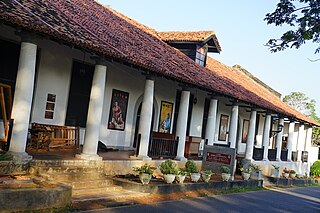
The National Museum of Galle is one of the national museums of Sri Lanka. It is located in the oldest remaining Dutch building in the Galle fort, Galle, a single storey colonnaded Dutch building built in 1656 as the commissariat store for the Dutch garrison at the fort. It subsequently served as a billiards room for the adjoining New Oriental Hotel. The building was renovated by the Department of National Museums and opened on 31 March 1986.

The Transitional period of Sri Lanka spans from the end of the Kingdom of Polonnaruwa, in 1232, to the start of the Kandyan period in 1597. The period is characterised by the succession of capitals that followed the fall of the Polonnaruwa Kingdom and the creation of the Jaffna kingdom and Crisis of the Sixteenth Century.

















